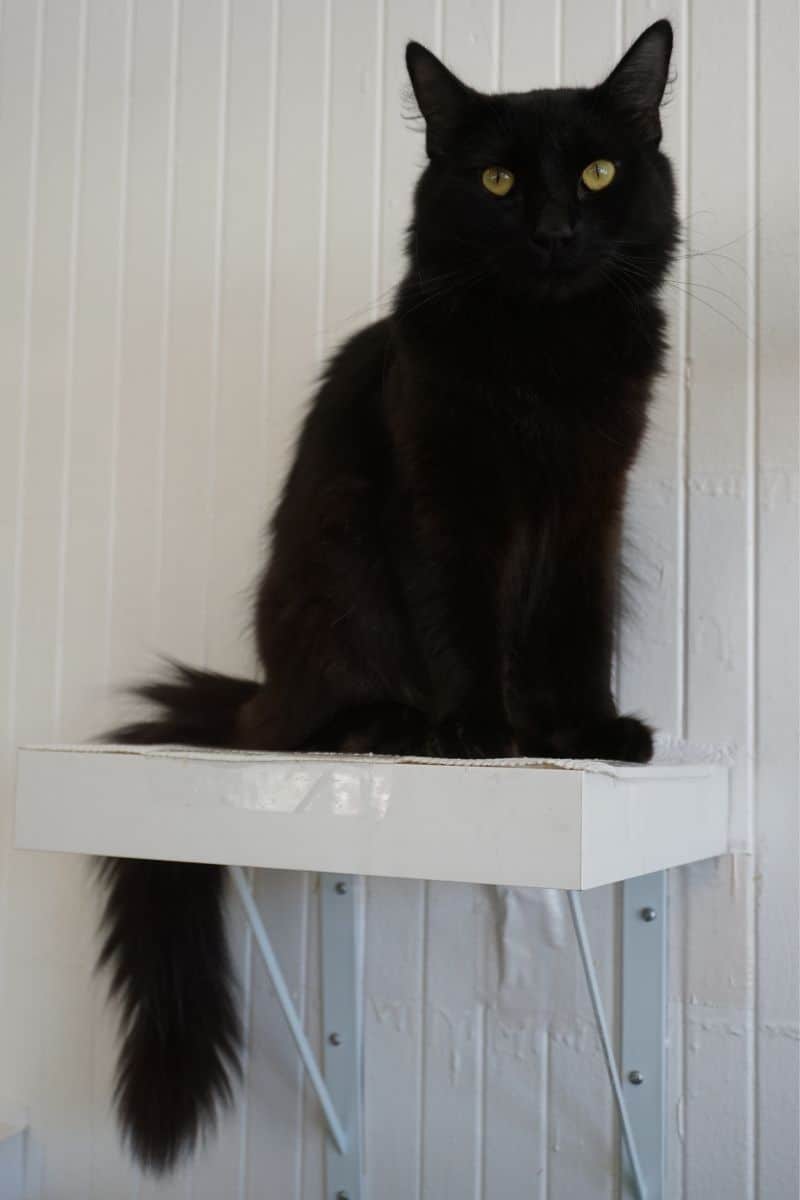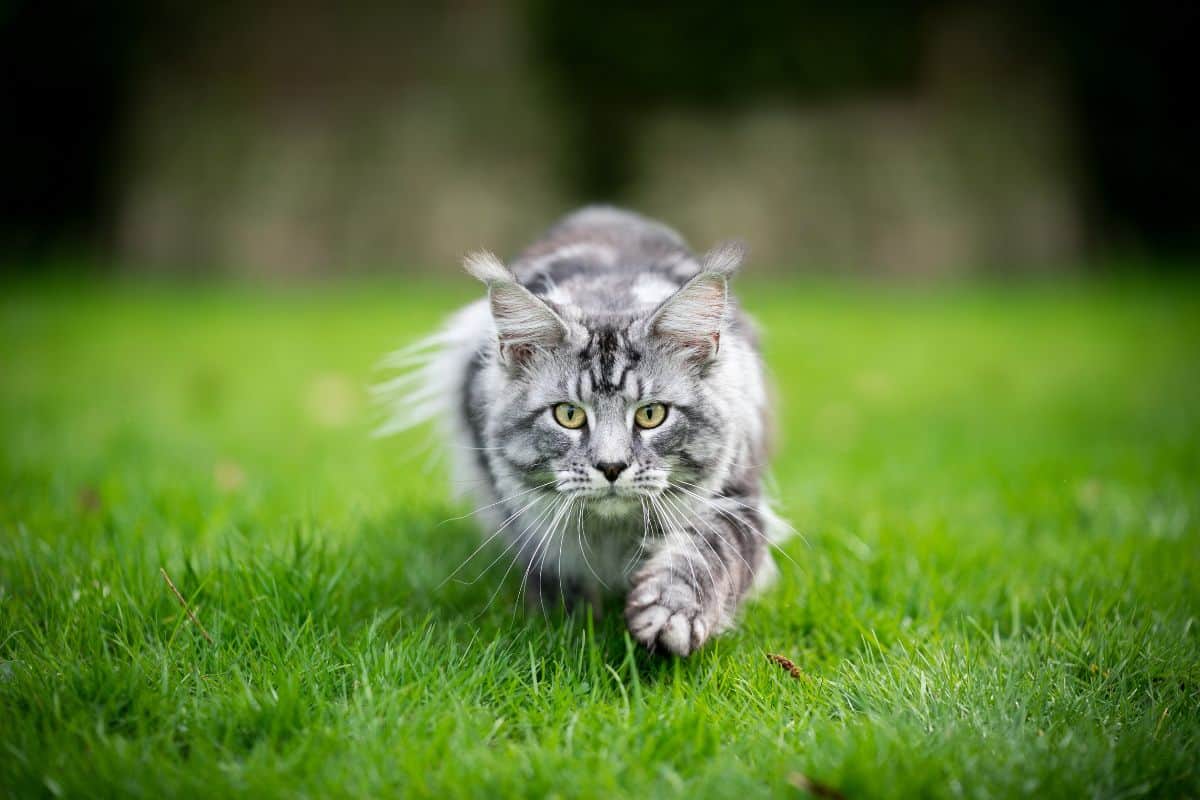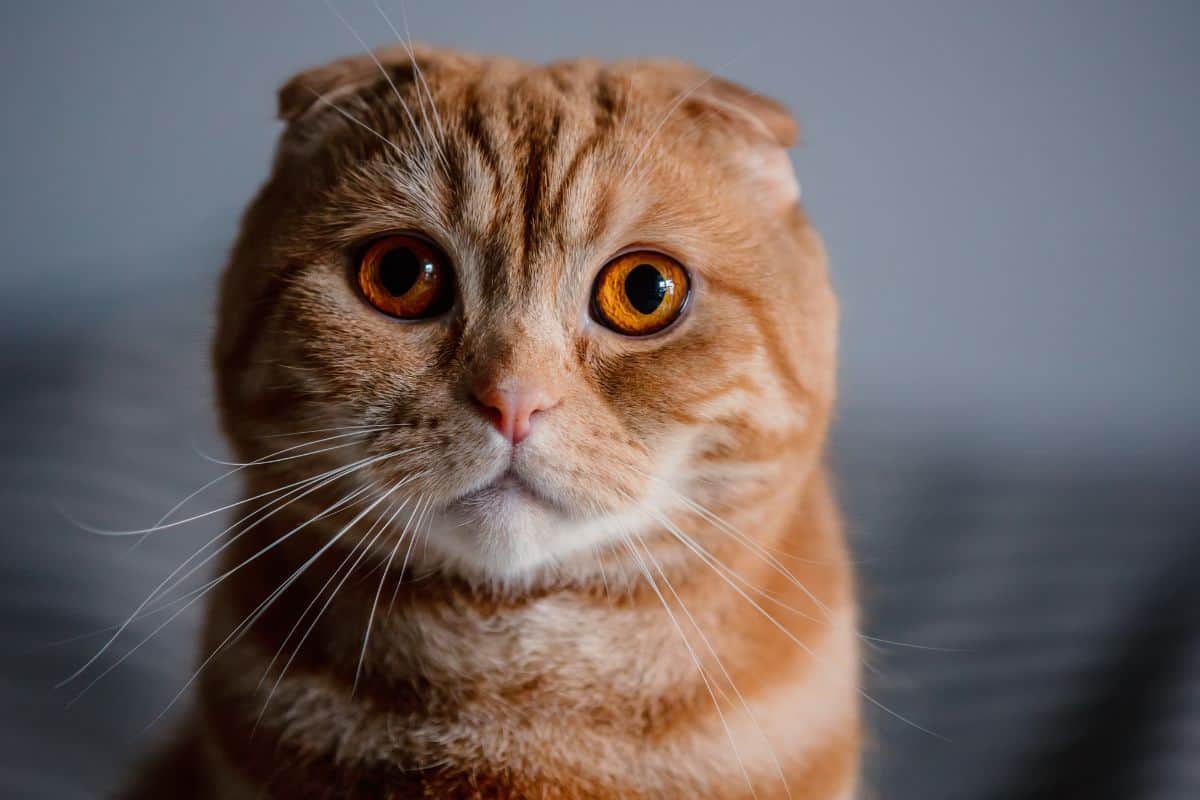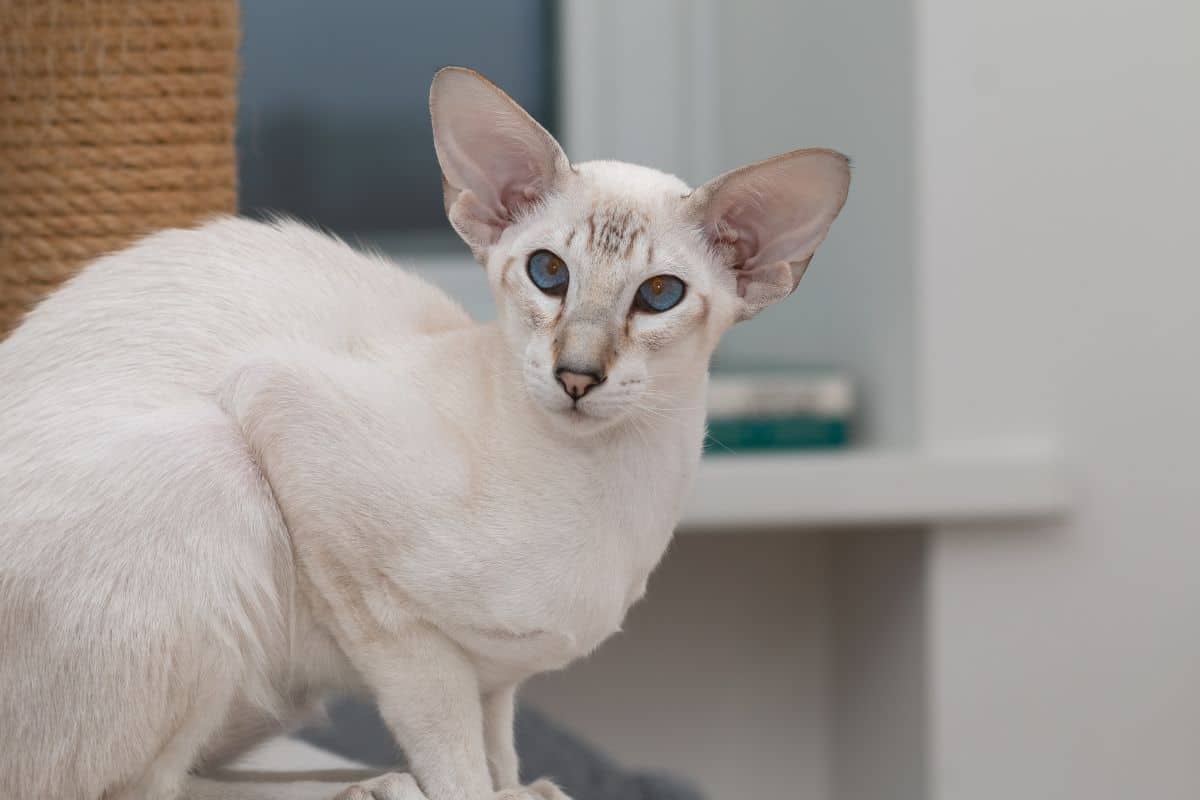As more cat breeds are developed, cats are also developing various shapes and sizes of ears. Most cats we see have straight, upright ears, sometimes called prick ears. There are several breeds that have unique ears that are folded or even curled.
The ears’ positioning can also change based on the cat’s breed. Some are positioned higher on the head, some are far apart, and some are close together.
And the tips of the ears also vary. Some are pointed while others are rounded off, some tufted and some fringed. Some can have a flared or wide-set base, and the ears can be set closely together on the top of the head or far apart.
Cats with prick ears
Most domestic shorthair and longhair cats have straight or prick-eared friends.
The Maine Coon, Turkish Van, and Norwegian Forest Cat are all known for having upright, straight, or prick ears. Some even have extra fur on and in their ears!
The Norwegian Forest cat is known for its long, beautiful coat. It has prick ears that stand high and an average distance apart. It’s also well-known for its heavily tufted ears, or hair that grows from the tip of the ears. These are also sometimes called Lynx tips due to the resemblance to lynx.

Similarly, the Maine Coon and the Turkish Van have prick ears with tufts. Even American Curl cats are known for having ears with tufts.
Other cats have what’s referred to as fringe or ear furnishings which is fur that grows from the inner part of the ear. Some cats actually have both, like the American Curl, the Highlander, Maine Coon, Norwegian Forest Cats, and the Turkish Van.

Cats with folded ears
Folded ears are the result of a genetic mutation that affects the cartilage of the cat’s ears. The first modernly reported case of folded ears can be traced back to just one cat, the common ancestor of all cats with this trait today.
The breed most well-known for its folded ears, the Scottish fold, as well as the Ukrainian Levkoy can trace their lineage back to one cat by the name of Susie, who lived as a barn cat in the 1960s in Scotland. [1] She was subsequently bred with other cats, and many of her kittens developed the same distinct ear shape and fold. Susie and her kittens would go on to create the breed known today as the Scottish fold.
Scottish Fold
The cat so aptly named for its folded ears is the Scottish fold. These ears are quite distinct in the way they are simply bent or folded over.
Surprisingly, Scottish fold kittens aren’t born with folded ears. They are actually born with ears that are completely straight or, in other words, how we would typically describe “normal” cat ears. It isn’t until the kittens are around the three to four-week mark that they tend to develop the fold in their ears.

Some Scottish folds never actually develop the fold. It all depends on whether or not the kitten is born with the dominant gene mutation that is responsible for the fold. The good news is that Scottish folds can hear perfectly fine. Having folded ears doesn’t disrupt the cat’s hearing in any way whatsoever.
Ukrainian Levkoy
The Ukrainian Levkoy is a cat that is the result of breeding between a Scottish fold and the Donskoy. [2] It is an adorable and slender cat with ears set at a wide base that fold slightly forward at the tip. Their ears don’t fold forward quite as much as the ears of the Scottish fold, but they still have their own characteristic charm.
The Ukrainian Levkoy only came about as recently as 2004, so it is still a relatively rare breed. Thanks to the Scottish fold, the cats’ ears are folded over, and thanks to the Levkoy, the cats have very little to no hair at all. This results in a very unique cat.
The cat is actually named after a plant, the Levkoy, known for its leaves that fold forward, much like this cat’s ears.
Cats with curled ears
Some cats have ears that curl. Instead of folding forward, the ears fold or curl rather towards the back of the cat’s head.
Similar to the fold, this characteristic is the result of a genetic mutation that gets passed down from a parent cat to the kittens.
Some cat breeds have a more significant curl to their ears like the American Curl. Whereas others like the Highlander and the Kinkalow have more of a slight curl to their ears.
American Curl
The breed known as the American curl is one such example of a cat with curled ears. It has large ears that curl towards the back of the cat’s head. The American Curl originates from a kitten taken in as a stray named Shulamith in 1981. Shulamith had unique ears that had a strange curl to them.

Like the Scottish fold, the American Curl kittens are born with straight or prick ears. Just a short while later, though, about three to five days after birth, they start to curl back. The curl will usually be anywhere around 90 degrees to 180 degrees.
The gene that causes this is autosomal dominant, meaning that a kitten with only one copy of the gene will still have curled ears. Though, some kittens may not develop the curls, depending on their genes.
Highlander
The highlander cat is the result of breeding between a Desert Lynx and a Jungle Curl, which is usually a mix between an African Jungle Cat and a domestic cat. The Highlander first came into being in 1993 but didn’t become officially recognized until about 2008.
They were originally called the Highland Lynx, but because the word lynx has such a close association with wild cats, breeders didn’t want people to think the breed was a wild or hybrid breed.
The highlanders’ ears are set on the very top of their head and far apart with a wide base. In addition to their unique ears, highlanders also tend to have incredibly short tails. Lengths usually vary from one inch to about the hock of the cat’s leg. Some highlanders may have longer tails, but these are not breed standard.
Kinkalow
The Kinkalow is another example of a breed of cat known for its curled ears. This adorable breed got its start in the United States in the 1990s thanks to a breeder who bred an American Curl and a Munchkin cat together.
The Munchkin is known for its abnormally short legs. When combined, the resulting Kinkalow is an incredibly unique (and adorable) cat with short stubby legs, about three inches shorter than the average cat, and ears that curl back. Not all Kinkalows will develop the trait of curled ears, but it is definitely a distinctive marker for the breed.
Cats with large ears
As we already know, cats’ ears come in all shapes and sizes. Some are known for their ears that are almost too big for their heads. Typically, cats are known for their small, cute, delicate features, but these cats with big, almost oversized ears have quite a lot of personality to match!
Oriental Cat
A cat that has almost comically large ears is the Oriental cat. These cats have an elegant and sophisticated look to them.
The one caveat is that their ears are proportionally much larger than their little heads and sleek bodies.
While their large ears may seem to overpower their look, they actually help to soften the look of the cat’s sharp, angular facial features. The cat’s features and oversized ears both work to balance each other out.

Peterbald
Another example of a cat with large ears is the Peterbald. This breed is comparable to the Oriental cat, but it differs in that it originated in St. Petersburg, Russia hence the name of Peterbald.
This cat was created by breeding the Oriental Shorthair (known for its large ears) and the Donskoy, a hairless breed of Russian origin.
The Savannah
The Savannah has wide ears with a wide base. It takes these cats a long time to reach adulthood. In fact, it takes almost three years before they are considered fully developed. And even then, their body never catches up with their big ears.
Unlike some other cats known for their large ears, the Savannah is a hybrid cat. The Savannah first came to be by crossing the African serval with a domestic cat. The Savannah tends to have more wild and less domestic traits than the common house cat, but many people with experience find them to be quite enjoyable companions.
Perhaps because they are mixed with a larger, wild cat like the serval, they are a big, larger bodied, so their ears are more proportional.

Conclusion
Regardless of what their ears look like or how fuzzy or furry they are (or hairless), we can all agree that cats are stunning creatures with a wide array of unique looks. And, who knows what other beautiful, unique breeds will be created or discovered?
References
[1] Heath, S. F. 2018. ACF Breeding Policy for the Scottish Fold (Longhair and Shorthair) and Scottish Longhair and Shorthair Cats.
[2] Crosta, M. C. (2020). Coat Color Genetics. In Feline Dermatology (pp. 23-66). Springer, Cham. DOI: 10.1007/978-3-030-29836-4_2







